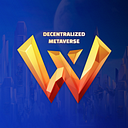1. Collecting is a Thing
Firstly, if you had a childhood devoid of collecting, then it’s possible you will simply never understand why NFTs and NFT games are becoming so popular.
People collect any number of things — stamps, coins, paper money, Pokémon cards, sports cards, and art.
In all collections, there are common and rare items. Rare items will always have a higher value to that community that is interested in the x, y, z of whatever is being collected. And we have always collected physical items because that was all there was to collect.
That is, until online and mobile games allowed for the collection of characters and gear, all of which was an exciting development with one major caveat — you could collect but your collection wasn’t really yours. The characters, gear — all of it, belonged to a development studio and/or the owners of whichever IP you happened to be collecting.
Blockchain technology, NFTs, and cryptocurrency have officially changed that narrative. People can buy and own unique digital assets — and own them outright.
Again, if you have never wanted to, or been interested in collecting, then NFTs may seem like a waste of time, energy and money, — an attitude that could similarly be put towards the collecting of porcelain dolls, antique silverware, or motorcycles.
To someone looking into any niche market, they simply may never understand what all the fuss is about — which is ok. You don’t need to understand Ferraris to understand why someone else may want to buy as many of them as possible.
2. No, NFTs are not a Scam, but…
Despite all the whistleblowing surrounding mainstream media in terms of cryptocurrency and NFTs, both of these — a new type of finance and a new way to collect digital assets — are here to stay, and they are not inherently a scam.
Are there scams out in the world that involve shady projects and shady people? Definitely yes.
Equally, one can also say that there is counterfeit art and counterfeit money in circulation around the world, but just because technology has reached a certain level, both of these types of fakes are easier to spot.
However, just because counterfeits exist, as do scams, one cannot paint broad strokes across an entire emerging industry, such as NFTs.
3. No, NFT Games are not a Scam, Either.
The current rise in NFTs has brought about a great deal of innovation and ideas surrounding how they can be bought, sold, and used. This brings us back to the introduction of online and mobile games, where one could collect and showcase to others all the cool toons, costumes, and gear that one had accumulated.
You can once again do this, but now the difference is that you own everything. And there are huge amounts of money and development behind the creation of NFT games.
Some games are simply about collecting and being a part of a small community, whereas others have much more grand ideas in terms of worldbuilding, metaverse, and virtual reality. And yet others are creating MMORPGs and grand-strategy games. We are just at the beginning of what is possible.
One need not look at the sheer number of games being advertised and developed. It is more telling to look at the surrounding mechanisms that are in place for game development to succeed. Companies like Animoca Brands, DAO Maker, Infinity Capital, RedKite, Solana, Serum, FTX, Ignition, Infura, Klaytn, and NFT.NYC all vet and work with game studios to bring ideas to life. Major celebrities collaborate with VR NFT games (Decentraland & Snoop Dogg) and there are major sponsors behind games, including Samsung and Ubisoft backing Axie Infinity, for example.
4. How can I spot a Scam?
As mentioned above, there are multi-million-dollar companies that work with game studios to invest or sponsor their projects. Thus, looking into who is supporting a project is a verifiable way to ascertain whether or not something is a scam.
Another way is the tried and true method of looking at something that is “too good to be true.” If a project is stating it will ‘literally take you on a trip to the moon’ or ‘introduce The Matrix in real life (both of these have been said by separate projects in 2021), then it does not take much independent digging to see these statements as outright lies.
Therefore, if an NFT project came about and promised 1000x returns on a Play-to-Earn business model, then either they are being a bit too optimistic or they are in fact trying to scam people to buy into their project.
Does Play-to-Earn exist? Yes, it does and it’s a verifiable way to have a revenue stream. Does it fully supplement your life and become the sole way to earn a living — probably not. But the point is that it is ‘a’ way to earn “some” money.
5. Old Man Yells at Cloud
As with any new venture, especially those that you wish to invest your money and time into, all it takes is a bit of independent research to understand the cost/benefits of whatever it is you wish to do.
If you love collecting, then NFT gaming is a real thing, and it’s easy to join any number of a hundred positive, vibrant communities now active on the internet.
But if you don’t like collecting art or playing cards, then please, by all means, don’t stand on a soapbox and scream at everyone else that the practice isn’t real. It’s simply just not for you.
_______________
About Warena
With the vision of bringing blockchain games to mass adoption, Warena is the world’s first cross-over, Play-to-earn game that allows you to live, play and earn in a metaverse using your personalized NFT character.
Follow us on:
💻 Website: https://www.warena.io/
🐦 Twitter: https://twitter.com/WarenaOfficial
📱 Telegram: https://t.me/warenaofficial
📘 Facebook: https://www.facebook.com/Warena.io
📸 Instagram: https://www.instagram.com/warenaofficial/
🅼 Medium: https://teamwarena.medium.com/
🎮 Discord: https://discord.gg/m6dRcxD84b
